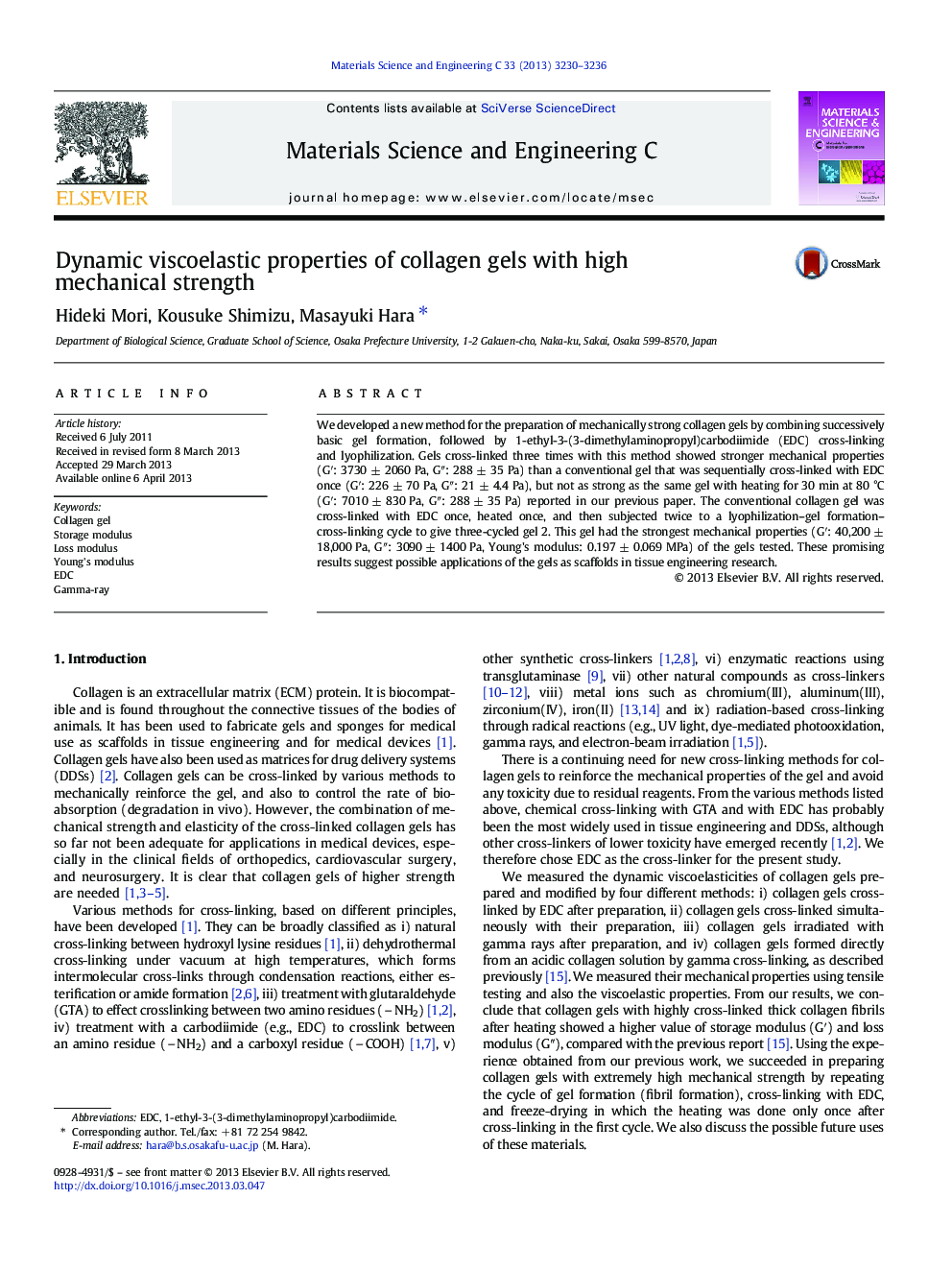| Article ID | Journal | Published Year | Pages | File Type |
|---|---|---|---|---|
| 1429169 | Materials Science and Engineering: C | 2013 | 7 Pages |
•We developed a new method for the preparation of mechanically strong collagen gel, cross-linked with EDC.•The gel was cross-linked once, heated once, and then subjected to lyophilization–gel formation–cross-linking cycle twice.•That gel had the strongest mechanical properties (G′: 40,200 Pa, G″: 3090 Pa, Young's modulus: 0.197 MPa) of the gels tested.
We developed a new method for the preparation of mechanically strong collagen gels by combining successively basic gel formation, followed by 1-ethyl-3-(3-dimethylaminopropyl)carbodiimide (EDC) cross-linking and lyophilization. Gels cross-linked three times with this method showed stronger mechanical properties (G′: 3730 ± 2060 Pa, G″: 288 ± 35 Pa) than a conventional gel that was sequentially cross-linked with EDC once (G′: 226 ± 70 Pa, G″: 21 ± 4.4 Pa), but not as strong as the same gel with heating for 30 min at 80 °C (G′: 7010 ± 830 Pa, G″: 288 ± 35 Pa) reported in our previous paper. The conventional collagen gel was cross-linked with EDC once, heated once, and then subjected twice to a lyophilization–gel formation–cross-linking cycle to give three-cycled gel 2. This gel had the strongest mechanical properties (G′: 40,200 ± 18,000 Pa, G″: 3090 ± 1400 Pa, Young's modulus: 0.197 ± 0.069 MPa) of the gels tested. These promising results suggest possible applications of the gels as scaffolds in tissue engineering research.
Graphical abstractFigure optionsDownload full-size imageDownload as PowerPoint slide
